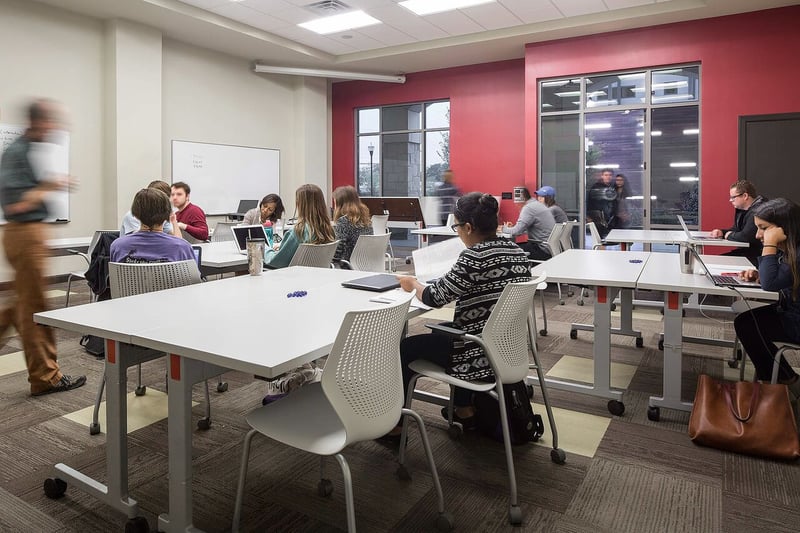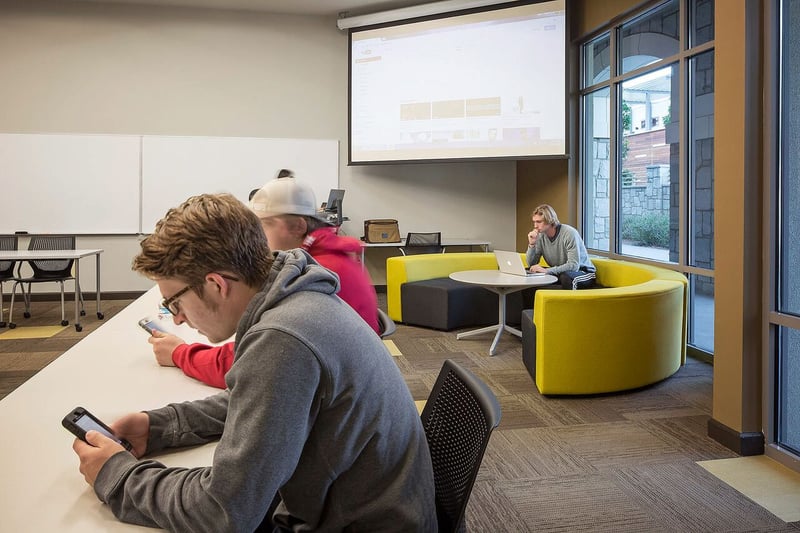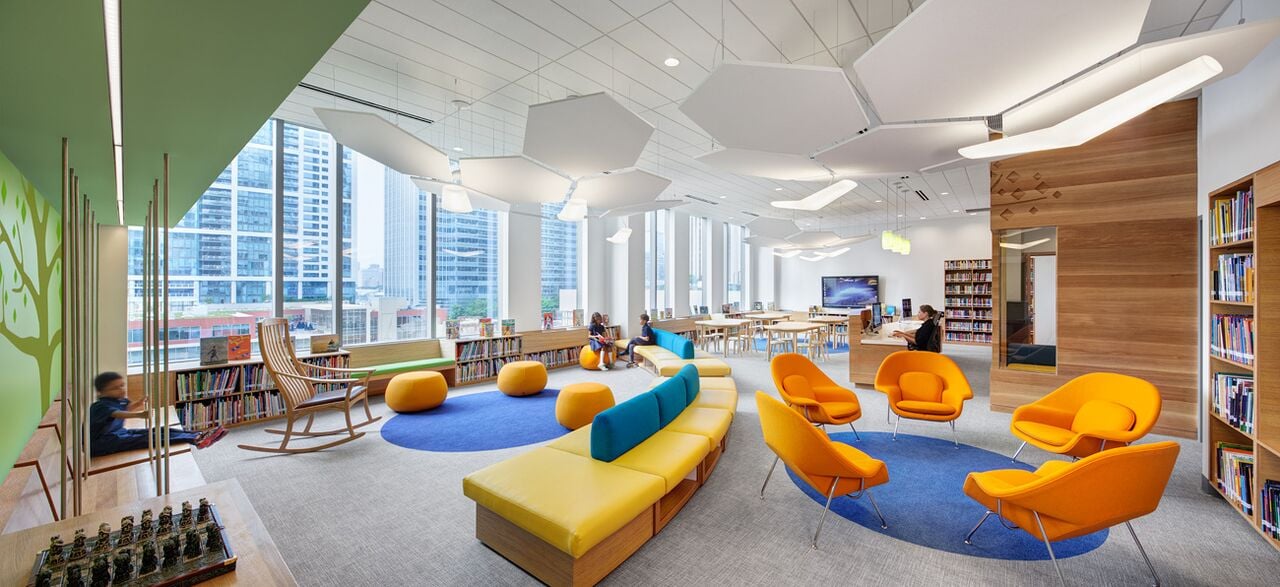3 Elements of Effective Learning Spaces: Design for Higher Education
As the needs of faculty and students move further away from what buildings constructed in the 20th century can provide, universities have stretched their imaginations and budgets to develop improved learning environments to attract and retain students.
In a study of how educational spaces can best suit students, administrators and faculty, Knoll found that the chief factors contributing to the quality of teaching and the educational experience for students and faculty depends largely on three key factors:
- Flexibility of classroom space
- Ease of reconfiguration of classroom furniture
- Ease of reconfiguration of classroom technology
What these takeaways tell us is that both students and professors feel they would enjoy more successful learning experiences if they’re able to “control” the classroom environment.
Let’s explore what contributes to these desires and discuss higher education design solutions that adhere to building standards and provide both educators and learners the experiences they need to be effective.
Flexibility of Classroom Space

Knoll’s study taps into something beyond mere design aesthetics. It reveals that the more flexible a classroom space is, the more it supports different teaching styles. By offering more dynamic environments for educators, a classroom is able to heighten student engagement, communication, collaboration and an overall sense of value.
So, how can you use design to create a learning environment that accommodates different teaching methods?
Two options include:
- Select multiple-use furnishings for your classroom that enable the single space to be used in multiple ways.
Consider meeting tables that can serve as a work surface for individual tasks or group activities. Keep in mind that adding some height-adjustable tables allows everyone to work comfortably and helps you meet ADA requirements in each classroom too.
When it comes to seating, select options that can support a variety of non-traditional postures and is flexible enough to support a smooth transition between individual and collaborative activities.
Lastly, think outside the box with storage solutions that also double as space dividers and can serve as movable boundaries between various types of ongoing activities within a classroom.
- Change your point of view.
The ability to easily change the focal point of interaction between student and teacher is important to support different teaching styles and a diversity of learning norms.
A well-designed, flexible classroom space gives faculty options for configuring specific learning experiences. You can promote choice for your faculty by using classroom furnishings that can be easily moved to create different layouts within the space.
Ease of Reconfiguration of Classroom Furniture

The ease by which a space can be reconfigured drives stronger communication and collaboration for both students and professors. By moving seamlessly from one activity or type of learning to another, no time is wasted with cumbersome furniture arrangement and students can dedicate their time to study.
Of course, universities need to offer more than just flexible classrooms. For a college student, the world is their oyster and today’s modern learner needs flexibility to study anywhere. Campuses should be designed to support informal learning and intellectual sharing as the dominant social activity.
Here are two simple ways to optimize flexibility of facility and spaces:
- Support a variety of group activities. Create small breakout rooms or larger spaces suited to formal and informal meetings, with the right furnishings and technology for the teaching and learning work at hand.
- Support an “always on” learning culture. The facility should be designed to facilitate learning, not just during regularly scheduled class hours but also for study groups, independent research, open lab time and other innovative uses of the space to maximize your return on investment.
Ease of Reconfiguration of Classroom Technology

Besides being an obviously appealing image universities want to convey, the use of technology in classrooms drives communication and collaboration. The easier it is to modify classroom technology, the more likely faculty will be to implement the tools.
Luckily, modern plug-and-play technology has made it easy to utilize such materials. Here are some simple ways you can optimize your university classrooms to enable easy technological applications:
- Technological accessibility. The technology provided to support learning in the classroom should be easily updated, accessible for all users, and have the capability of providing immediate learning opportunities for both students in the room as well as external participants who may be remotely logged in. It should accommodate both the virtual and physical worlds.
- Maximize safety. Ensure that technology devices and their input devices are specified and arranged to minimize awkward postures and support flow of teaching and learning tasks.
- Zone the technology. Consider placing whiteboards or other display technology at several locations within the classroom to support several concurrent activities. Ideally, vary the lighting intensity within different areas of the classroom to suit different types of concurrent individual and small team work.
Space design requirements and strategies are never “cookie cutter” across higher education organizations. However, by creating spaces that align with the needs and goals of both your faculty and students, you can create a future-facing space that best supports your unique learning environment.
Knoll’s simple and sustainable products are optimized to higher education environments. With GREENGUARD Indoor Air Quality Certified solutions for healthy interior environments and interior design solutions that are BIFMA level certified, Knoll furniture can help contribute to your LEED certification.
To learn more about Knoll solutions for higher education, contact us for a free consultation.

